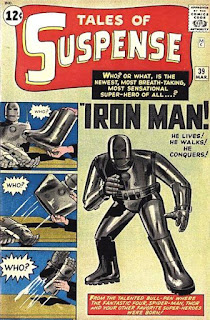Eng 4983: Superheroes as
Literature
Final Paper Assignment
Option #1: The Ethics of
Superheroes: While Superman is the
prototypical superhero, even he has origins in the supervillain, as every
superhero has the potential to become a monster. As superheroes have grown up
in comics, their ethics have become more clouded, and the pursuit of justice a
much less black and white affair. Using some of the comics in class, discuss
what the ethics of a superhero seem to be today. What constitutes a heroes
morality? What are the extremes? The gray areas? What lines still haven’t been
crossed (if any)? Do you think they’ve already gone too far into enemy
territory?
Option #2: The Cultural
Significance of Comics: Though comics
have always been a ‘low’ art form, printed on cheap paper and considered
disposable, they have not only proved extremely durable, but reflected the
social and cultural movements of American life. Through comics, we can see many
of the struggles of American society, and particularly, the fears, dreams,
biases, and conflicts that shape our nation’s history. How do some of the
comics in class reflect our past and current cultural moment? What do they say
about us as individuals and as a nation? How can superheroes be a mirror and a
metaphor for who we are today?
Option #3: Comics in the
Classroom: When comics were attacked in the 1950’s,
Frederic Wertham derided them as totally without educational merit, and
predicted that they would create “mass illiteracy” in society. On the contrary,
comics have inspired many kids to become great readers and often share a
beneficial relationship with both traditional art and literature. Nevertheless,
they are not welcomed wholeheartedly into the classroom, and many teachers
continue to think of them as dangerous to young readers. How might we invite
comics into the modern-day curriculum at any level, and what advantage might
teachers find in using comics to teach literacy, history, culture, symbolism,
style, etc.? How are some teachers already doing this today?
OUTSIDE SOURCES: I want you
to plug into what other people are saying and thinking about comics as well, so
I want you to do a little research for this assignment. Below are some great
sources you can use to find the ‘conversation’ behind comics. You should have
at least 2-3 sources besides the comics in class, which will give you more to
write about, and more to think about.
·
ComicsResearch.org
(a site full of academic and popular content)
·
ComicsResearch.org/blog
(a blog full of comics news and events)
·
Cbldf.org
(Comic Books Legal Defense Fund: a site about banned comics and other
comics-related issues)
·
Lambiek
Comiclopedia (an on-line encyclopedia of comics: http://lambiek.net/artists/index.htm)
·
Don’t
forget, too, to search through EBSCO through the library’s website, or even
Google Scholar, for articles on your topic. The links and bibliography in
Wikipedia articles is also a useful source for research.
·
You
can also cite the blog from class as one source, just be sure to look up how to
cite blogs and other online content here: Purdue OWL // Purdue Writing
Lab
FINAL PAPER DUE Friday,
December 31st by e-mail. I will respond to your paper with a rubric
and comments within a few days, along with your final course grade. Please
e-mail me with any questions!






















